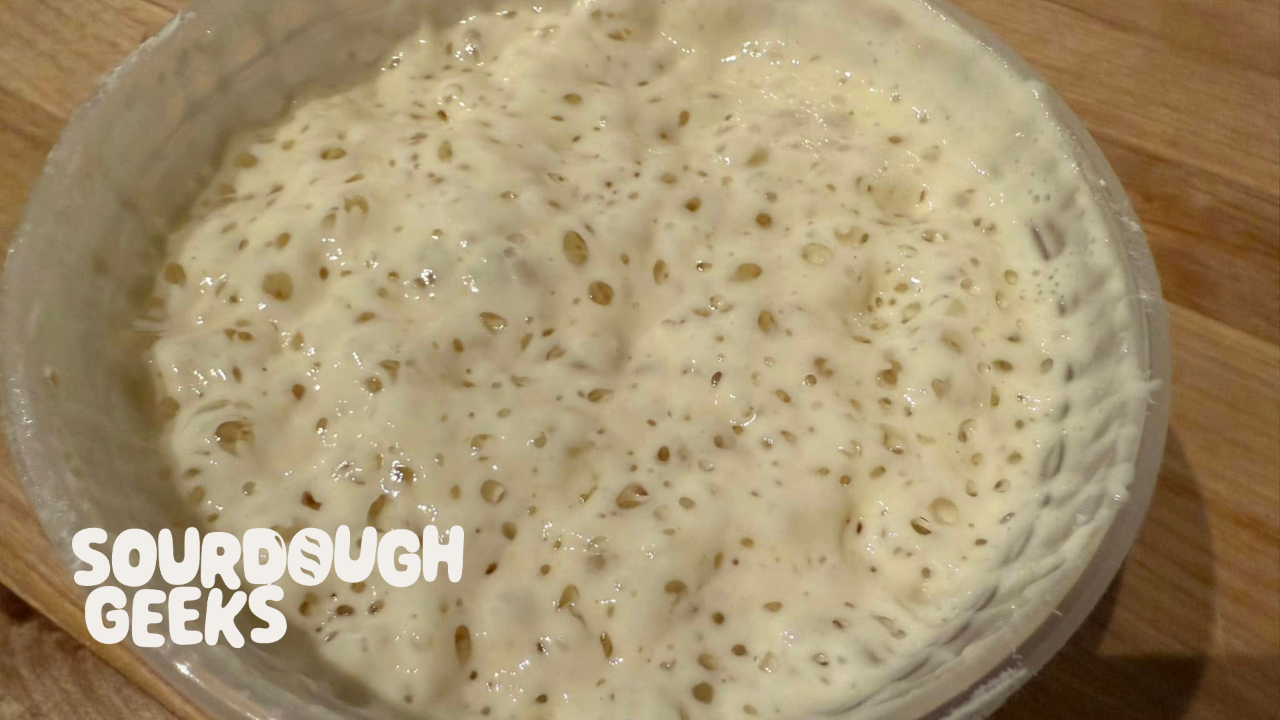
What Does “Peak” Mean When Feeding Your Starter?
If you’ve been in sourdough circles long enough, you’ve probably heard the term “peak” used a lot when it comes to feeding your starter. However, what exactly does "peak" mean, and how does it relate to your starter’s overall health?
Not long ago, there was an epidemic in sourdough circles where people were feeding their starters at a 1:1:1 ratio once per day, or neglecting to refresh refrigerated starters, causing excessive acidity. As a result, many bakers began advising that feeding “peak to peak” would strengthen the starter. But recently, I’ve noticed a shift. When we ask bakers to show their starters at peak, they often look quite different from what we would classify as peak ourselves.
So, let’s clarify: “Peak” doesn’t mean one specific thing—it can vary depending on your environment and how you’re measuring growth. Once your starter stops increasing in volume, it’s still actively fermenting. The growth you see is influenced by factors like the size and shape of the vessel, the flour absorption rate, and the hydration level.
For example, a tall, narrow jar will show growth differently than a short, wide pot. And remember that peak volume isn't necessarily the same as peak activity—it’s about the behavior, not just the appearance.
The Four Phases of Growth
Let’s take a closer look at the four phases of the yeast cycle and how they relate to your starter:
-
Lag Phase: After feeding, not much happens during this phase. The microorganisms are adjusting to their new environment and preparing for growth.
-
Log Phase: This is where the magic happens. Yeast cells go through aerobic respiration (with oxygen) and then multiply exponentially through budding (asexual reproduction).
-
Stationary Phase: As nutrients begin to deplete and pH drops, yeast growth slows, reaching a plateau. Growth and cell death balance out, but the culture can stay in this phase for a while, awaiting favorable conditions.
-
Death Phase: Eventually, if the conditions don’t improve, the cells enter the death phase, leading to a lower cell density.
Bacterial growth follows a similar pattern, which is important because sourdough is a symbiotic culture—yeast and bacteria live in harmony. In a healthy, balanced starter, the ratio of yeast to lactic acid bacteria is typically about 1:100. However, yeast cells are significantly larger than bacteria, so the actual mass is in equilibrium.
The yeast will begin growing first, entering the log phase while the bacteria are still adjusting in their lag phase. Eventually, the bacteria catch up, growing at a faster rate than the yeast. But lower inoculation rates (higher feed ratios) can lengthen the lag phase, allowing bacteria to catch up sooner, which can cause increased acidity.
Finding the Right Balance
Feeding your starter too infrequently with large feed ratios can cause an imbalance between the yeast and bacteria. When the yeast reach the stationary phase and the bacteria have not yet caught up, the starter may lose its strength and stability. This is why it’s better to feed your starter more often with smaller feed ratios (higher inoculation) and let it stay at peak as long as possible before feeding again.
Here’s how I maintain my starter:
- Temperature: I keep my starter around 75-76°F and feed it twice a day with a 1:2:2 or 1:3:3 ratio.
- Flour: I use 100% all-purpose flour, usually Trader Joe’s Unbleached AP, which is affordable and effective for feeding my starter.
- Once-a-Day Feed: If I’m only feeding once a day, I lower the temperature to around 68-70°F and use a 1:5:5 ratio.
- Special Feedings: For shorter bursts, I may increase the inoculation to 1:1:1 or even 2:1:1 for 2-4 hours at a warmer temperature (80-82°F). This is usually for a levain build to boost yeast activity.
For overnight levain builds, I decrease hydration and use whole grain or high-extraction flours to enhance flavor development.
Conclusion
Understanding the growth phases of yeast and bacteria in your starter is key to maintaining a healthy, balanced culture. The process of feeding your starter isn’t just about hitting a specific visual “peak” but rather about keeping the yeast and bacteria in harmony, allowing both to thrive. By feeding at the right intervals, using appropriate ratios, and adjusting your environment, you’ll support a starter that’s strong, active, and ready for baking.
Ultimately, "peak" is a flexible concept that varies based on your starter’s unique behavior, but with consistent care and attention, you’ll be able to foster a culture that produces delicious, reliable sourdough every time.

